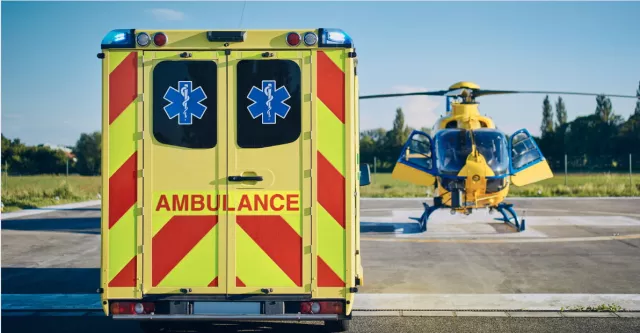Plan for and Respond to Active Shooters in the Workplace

Stress associated with this new normal follows uncharted territory with increased behavioral challenges that may negatively affect many employees' mental loads. Establishing a respectful workplace culture where colleagues check in with each other and prioritize mental health can help tremendously reduce these tragedies.
Knowing ways to prevent incidents of violence in the workplace is important, but planning for and responding to active shooters is essential. According to a research from the the Gun Violence Archive and the FBI, there were 655 active shooter incidents in 2023 and 646 active shooter incidents in 2022. This upward trend represents a 58% increase from 2019, which cited 414 incidents.
Prevent
Employer policies that set expectations for workplace behavior in previous years may no longer be relevant. Updating policies to include training specific to emergency preparedness and understanding behaviors that may indicate concern are critical proactive measures. Additionally, having clarity on what to do and how to report threats is equally important as a preventative measure, even with a distributed workforce.
Assess whether your training content should be updated as well. Approaches that reflect contemporary examples and modern strategies will be more effective than reusing outdated information that may promote confusion. Consider reviewing current best practices and implementing options-based training with life-saving skills. Options-based training is different from a rehearsed scenario, such as fire drills, as it can build employee muscle memory and confidence. Life-saving skills that can be used at home and work are also crucial for providing employees with tangible options for surviving an emergency. Workplace threat assessment programs are another excellent tool for helping prevent workplace violence.
Plan
Planning for the fluid state of today's workforce requires flexibility for employers. Hybrid and remote options will remain for many businesses, and being proactive ensures higher success for your organization. Crafting training to include essential points of contact, emergency evacuation routes, responsibilities of different parties, and step-by-step instructions is a great way to prepare. Likewise, strategies to plan for active shooters in the workplace may include the following:
Communication
Provide access to technology for all employees around critical training and messages significant to the organization. Utilize multiple channels such as desktop alerts, mobile push alerts, text messages, and/or voice calls to ensure that even those without a need for technology in their work are notified; consider using a bi-directional alerting platform. Safety is everyone's responsibility, and building trust is critical to all.
Adaptation
Review where your organization is regarding emerging risks and determine what kind of training is needed to support the organization. Risks you might consider are new compliance requirements for COVID-19, harassment and discrimination, diversity and inclusion, and evolving global impacts (ESG). Transparency in why these changes occur creates opportunities for authentic employee engagement.
Clarification
Create certainty for employees by communicating updated policies and reviewing expectations around meeting the company's challenges. Mitigating uncertainty around business needs or financial outlooks regarding layoffs should be communicated clearly in addition to any updates to consequences surrounding employee misconduct. Engaging in these dialogues invites employees to have a seat at the table and shows that you care about their well-being.
Respond
2021-2023 had the highest number of active shooter incidents for the time period ranging from 2000-2023. Even with planning and prevention, there may still be a possibility that requires immediate action response. The mind works differently during a crisis, so the trained mind is more likely to recall what they have learned and take decisive action, versus the untrained mind, which may panic or freeze and hesitate. National programs such as Standard Response Protocol (SRP), Avoid Deny Defend, and Civilian Response to Active Shooter Events (CRASE) utilize a whole community approach for informed and educated employees to take action. Responding to active shooters in the workplace will strongly benefit from the previously mentioned strategies, but situational awareness decisions are critical to saving lives in an emergency.
One of the most popular tactics to respond to an active shooter attack is Run, Hide, Fight. The FBI provides training videos on this strategy, and the message is easy to remember.
- Run to safety, if possible, keeping your hands visible.
- Hide in a safe place if you cannot escape.
- Fight as a last resort.
With a central crisis management system, employers can help create family reunification or assistance centers, plan community vigils and memorials, and help survivors transition after the attack. Emotional support and trauma-based therapy can be coordinated with local service providers or victim support agencies. Forming these partnerships before an emergency opens the conversation for risk mitigation and can help you plan more strategically for the future. After-action reports and policy updates should be included in your response plan to improve plans for the future and anticipate any litigation.
Ask for Assistance
No one wants to plan for an active attacker situation, but unfortunately, it is critical to include in business continuity plans. Contact Preparis to speak with our experts about how to incorporate these plans and run organization-wide exercises to build confidence and muscle memory.


